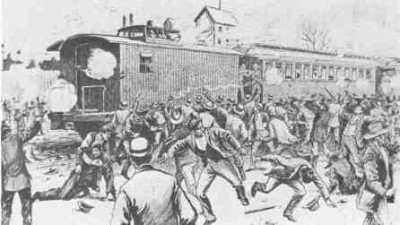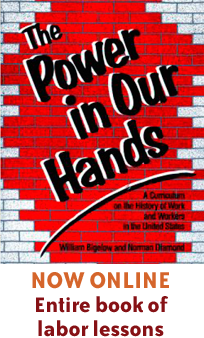
One of the historic examples in the lesson is the Pullman strike. Here is an artist’s rendering of the clash between striking Pullman workers and federal troops. Click on image for link to Illinois History article about the strike.
This lesson introduces students to the origins of the minimum wage and the 40-hour work week. Using reader-friendly articles and small group activities, the lesson emphasizes the actions taken by workers and activists to make sure a minimum wage was established in law and enforced.
The readings and activities are appropriate for grades 6 to 12 and can be used in social studies or language arts classrooms.
Below are the objectives and introduction to the lesson. The complete Labor Matters lesson, including links to handouts and an extended activity, can be found on the Learning for Justice website.
Objectives
- Students will understand their connection to the history of organized labor
- Students will identify major strategies and tactics of labor organizers
- Students will consider ways to apply these or other tactics to improve working conditions today
- Students will identify some major figures in the history of the labor movement, and recognize the role of average, less-celebrated workers in the success of that movement.
Introduction
To understand the debate over the Employee Free Choice Act, one must understand the basics of the labor movement and union organization. That’s not easy, in a world in which union organization has hit a low point. Fewer than ten percent of American workers today are unionized, compared to 35 percent in the mid-20th century. Yet we all benefit from rules such as the 40-hour workweek, the minimum wage, and workplace safety regulations.
This lesson draws on students’ prior knowledge to help them understand the importance of the labor movement.








Twitter
Google plus
LinkedIn